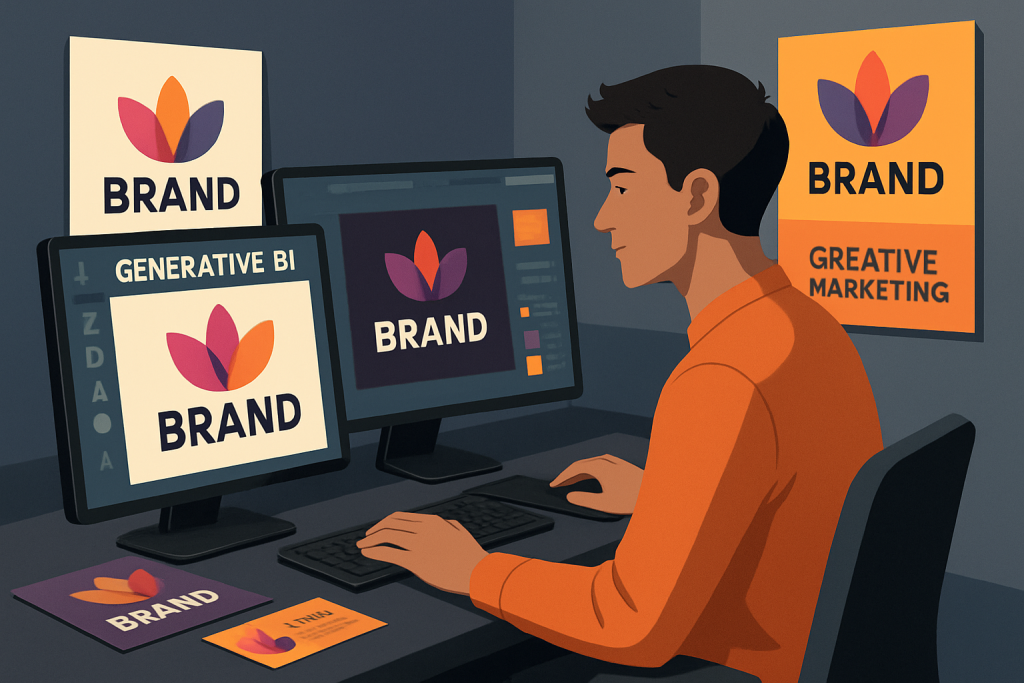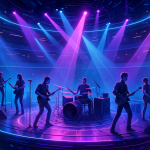October 20th, 2025. The day the creative landscape tilted. Forget the singularity; the real revolution is happening one perfectly brand-aligned image at a time. Adobe, the titan of creative software, just dropped AI Foundry, and it’s poised to redefine how businesses approach content creation. Remember when Firefly first flickered into existence back in ’23? That was just the spark. AI Foundry is the forge.
For years, companies have wrestled with maintaining brand consistency across a deluge of content. Every tweet, every image, every video needs to scream “us.” But scaling that consistency? That’s been a Herculean task. Think of Coca-Cola’s iconic script, or Apple’s minimalist aesthetic. Replicating that, consistently and at scale, has required armies of designers and eagle-eyed brand guardians. Until now.
AI Foundry isn’t just another AI tool; it’s a bespoke tailor for your brand’s digital persona. It lets enterprises build custom generative AI models, fine-tuned on their own data, spitting out content that perfectly mirrors their brand identity. Imagine a world where your AI understands your brand guidelines better than your junior marketing assistant. Scary? Maybe a little. Efficient? Absolutely.
The secret sauce? Customization, integration, and control. Let’s break it down.
Customization: Your Data, Your Rules
This isn’t about generic AI churning out generic content. AI Foundry allows you to feed your AI monster a steady diet of your own proprietary data. Think of it like this: you’re not just buying a chatbot; you’re training your own personal Jarvis (yes, Iron Man reference intended), but instead of managing your suit, it’s crafting perfect social media posts and marketing materials.
This means you can upload all your existing marketing materials, brand guidelines, style guides, and even examples of what *not* to do. The AI learns your unique voice, your aesthetic preferences, and your specific brand quirks. The result? AI-generated content that doesn’t just look good; it *feels* like your brand.
Integration: Seamlessly Blending AI with the Creative Suite
Adobe knows its audience. It knows that creatives aren’t going to abandon their beloved Photoshop or Illustrator overnight. That’s why AI Foundry is designed to seamlessly integrate with Adobe’s existing suite of creative tools. This isn’t about replacing designers; it’s about augmenting their capabilities. It’s about freeing them from the mundane tasks, so they can focus on the truly creative work.
Imagine a designer using Photoshop to refine an AI-generated image, or a video editor using Premiere Pro to polish an AI-generated animation. The workflow becomes fluid, collaborative, and, dare I say, even enjoyable. It’s like having a super-powered assistant who can handle the grunt work, leaving you free to focus on the artistry.
Control and Security: Protecting Your Brand’s DNA
In a world of rampant data breaches and AI-generated deepfakes, security is paramount. AI Foundry addresses these concerns by giving companies complete control over their data. By training models on their own servers, companies can ensure that sensitive information remains secure and that the AI-generated content is aligned with their ethical guidelines.
This is crucial for industries like finance and healthcare, where data privacy is not just a best practice, but a legal requirement. AI Foundry provides a safe and secure environment for these companies to leverage the power of generative AI without compromising their data or their integrity.
So, what are the implications of all this? Well, buckle up, because they’re far-reaching.
First, expect a surge in hyper-personalized marketing. Companies can now create unique content experiences for each individual customer, tailored to their specific needs and preferences. Imagine receiving a personalized email with an AI-generated image that perfectly reflects your interests. Creepy? Maybe. Effective? Definitely.
Second, expect a shift in the role of creatives. Designers will become more like AI wranglers, guiding and refining the output of generative models. The focus will shift from execution to strategy, from creating individual assets to designing entire content ecosystems. It’s a brave new world, and creatives will need to adapt to thrive.
Third, expect increased competition in the enterprise AI space. Adobe is throwing down the gauntlet, challenging the likes of Google and Microsoft to deliver truly customized AI solutions for businesses. The race is on, and the winners will be the companies that can provide the most powerful, flexible, and secure AI tools.
But let’s not forget the ethical considerations. As AI becomes more powerful, we need to ask ourselves: what are the limits? How do we ensure that AI-generated content is not used to deceive or manipulate? How do we protect the jobs of human creatives? These are tough questions, and we need to start answering them now.
The launch of AI Foundry is not just a technological breakthrough; it’s a cultural shift. It’s a sign that AI is no longer just a futuristic fantasy; it’s a present-day reality. And it’s up to us to shape that reality in a way that benefits everyone.
So, the next time you see a perfectly crafted image or a cleverly worded tweet, ask yourself: was that created by a human, or by an AI? And does it really matter?
Discover more from Just Buzz
Subscribe to get the latest posts sent to your email.


